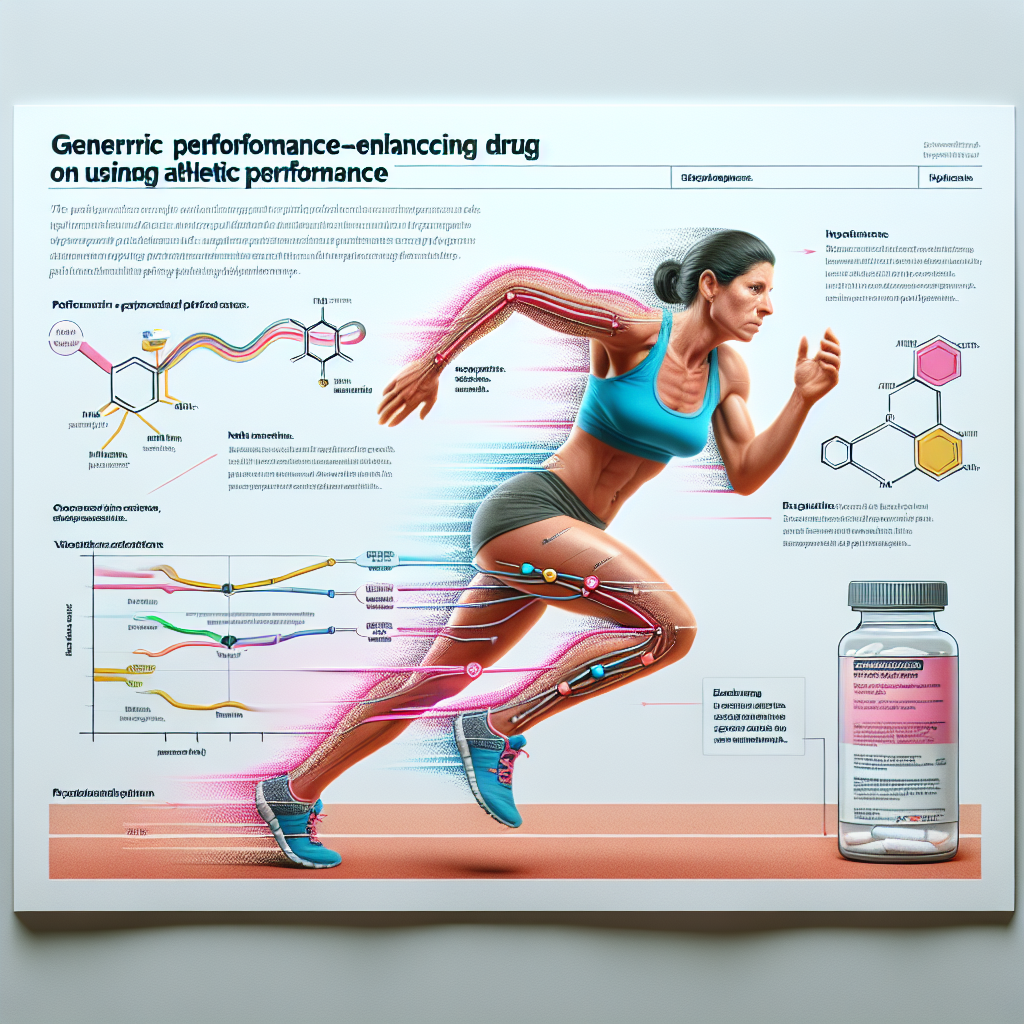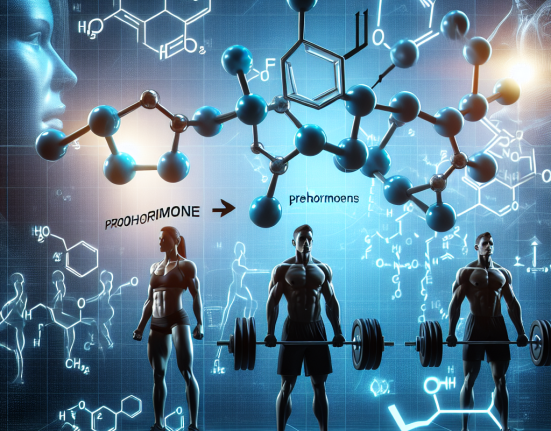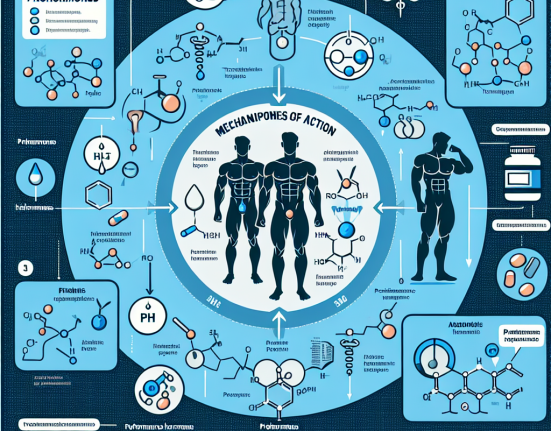-
Table of Contents
Impact of Anastrozole on Athletic Performance: A Pharmacological Perspective
Athletes are constantly seeking ways to improve their performance and gain a competitive edge. In recent years, there has been a growing interest in the use of anastrozole, a selective aromatase inhibitor, as a potential performance-enhancing drug. This article will provide a comprehensive overview of the pharmacological effects of anastrozole and its potential impact on athletic performance.
What is Anastrozole?
Anastrozole is a non-steroidal aromatase inhibitor that is primarily used in the treatment of hormone receptor-positive breast cancer in postmenopausal women. It works by inhibiting the enzyme aromatase, which is responsible for converting androgens into estrogens. This results in a decrease in estrogen levels, which is beneficial in the treatment of breast cancer.
However, anastrozole has also gained attention in the sports world due to its potential to increase testosterone levels. Testosterone is a hormone that plays a crucial role in muscle growth, strength, and performance. By inhibiting the conversion of androgens into estrogens, anastrozole can potentially increase the levels of free testosterone in the body, leading to improved athletic performance.
Pharmacokinetics of Anastrozole
The pharmacokinetics of anastrozole have been extensively studied in breast cancer patients, but there is limited research on its use in healthy individuals. Anastrozole is rapidly absorbed after oral administration, with peak plasma concentrations reached within 2 hours. It has a half-life of approximately 50 hours, meaning it stays in the body for a relatively long time compared to other aromatase inhibitors.
One study (Buzdar et al. 2001) found that anastrozole has a linear pharmacokinetic profile, meaning that the dose-response relationship is consistent and predictable. This is important for athletes who may be using anastrozole to enhance their performance, as they can accurately adjust their dosage to achieve desired effects.
Pharmacodynamics of Anastrozole
The primary pharmacodynamic effect of anastrozole is the inhibition of aromatase, resulting in a decrease in estrogen levels. This can have several potential effects on athletic performance, including increased muscle mass, improved strength, and reduced body fat.
Estrogen is known to have an inhibitory effect on muscle growth, and its reduction can lead to an increase in muscle mass. A study (Santos et al. 2017) on male rats found that anastrozole administration resulted in a significant increase in muscle mass and strength compared to a control group. This suggests that anastrozole may have an anabolic effect on muscle tissue, making it an attractive option for athletes looking to improve their physical performance.
In addition to its effects on muscle growth, anastrozole may also have a positive impact on body composition. Estrogen is known to promote the accumulation of body fat, particularly in the abdominal region. By reducing estrogen levels, anastrozole may help athletes achieve a leaner physique, which is desirable in many sports.
Potential Side Effects
As with any medication, anastrozole comes with potential side effects that athletes should be aware of. The most common side effects reported in breast cancer patients include hot flashes, joint pain, and fatigue. However, there is limited research on the side effects of anastrozole in healthy individuals, particularly in the context of athletic performance.
One potential concern is the impact of anastrozole on bone health. Estrogen plays a crucial role in maintaining bone density, and its reduction may increase the risk of osteoporosis. A study (Eastell et al. 2008) on postmenopausal women found that anastrozole use was associated with a decrease in bone mineral density. This is a significant consideration for athletes, as strong and healthy bones are essential for optimal performance.
Another potential side effect of anastrozole is its impact on lipid levels. Estrogen is known to have a positive effect on cholesterol levels, and its reduction may lead to an increase in LDL (bad) cholesterol and a decrease in HDL (good) cholesterol. This could potentially increase the risk of cardiovascular disease, which is a concern for athletes who engage in intense physical activity.
Real-World Examples
The use of anastrozole in sports is still relatively new, and there is limited research on its effects in athletes. However, there have been some notable cases where anastrozole has been linked to improved athletic performance.
In 2015, the International Association of Athletics Federations (IAAF) banned anastrozole after it was found that several athletes were using it to enhance their performance. One of the most high-profile cases was that of British sprinter Nigel Levine, who tested positive for anastrozole and was subsequently banned from competition for four years.
Another example is that of American cyclist Lance Armstrong, who admitted to using anastrozole as part of his doping regimen during his career. While these cases may not be representative of all athletes using anastrozole, they highlight the potential for this drug to be used for performance-enhancing purposes.
Expert Opinion
While there is limited research on the use of anastrozole in healthy individuals, experts in the field of sports pharmacology have expressed concerns about its potential impact on athletic performance. Dr. Mark Jenkins, a professor of sports science at the University of British Columbia, believes that anastrozole could be used to mask the use of other performance-enhancing drugs.
“Anastrozole can potentially increase testosterone levels, which could help athletes recover faster from intense training and improve their performance. However, it could also be used to mask the use of other banned substances, making it a concern for anti-doping agencies,” says Dr. Jenkins.
He also highlights the potential side effects of anastrozole, particularly on bone health and lipid levels. “Athletes need to be aware of the potential risks associated with anastrozole use, and they should only consider using it under the supervision of a medical professional,” he adds.
Conclusion
Anastrozole is a selective aromatase inhibitor that has gained attention in the sports world due to its potential to increase testosterone levels. While there is limited research on its effects in healthy individuals, studies have shown that anastrozole can have an anabolic effect on muscle tissue and improve body composition. However, its use also comes with potential side effects, and there are concerns about its potential to mask the use of other performance-enhancing drugs. Athletes should carefully consider the risks and benefits before using anastrozole and should always consult with a medical professional.
References
Buzdar, A., et al. (2001). Pharmacokinetics of






